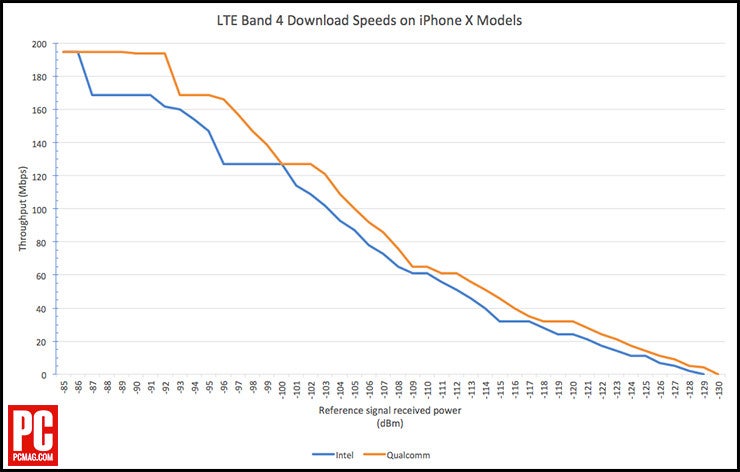Verizon vs AT&T iPhone X versions tested, big advantage for Qualcomm's modem in weak-signal scenarios

The bad part, however, is that there are also differences in download speeds between the iPhone X's A1865 model, which is on Verizon or Sprint, thus uses the Qualcomm modem, albeit in a crippled version, and the more widely available A1901 variant with the Intel modem that's shipped to AT&T, T-Mobile, and most every other GSM network globally.
Armed with top-shelf network testing equipment, research firm Cellular Insights took both the A1865 and A1901 models of the iPhone X,, and blasted them with LTE signal of varying strength. It turned out that the Intel modem consistently underperformed in comparison with the Qualcomm one, but the difference was especially pronounced in simulated weak-signal scenarios, which saw the A1865 iPhone X model score 67% faster download speeds on average than the Intel modem version.
Bummer, but Apple is rumored to be working with Intel on a CDMA and 5G network support modem for next year's iPhones that will end its dependency on Qualcomm, and might even bring us a dual SIM, dual LTE iPhone with Gigabit LTE download speeds. For now, though, you are better off getting unlocked iPhone X, which is likely using the Qualcomm modem, so that you have some extra assurance in low-signal areas.
source: PCMag
Follow us on Google News










![A new Android bug is making it impossible to install new apps. Are you affected? [UPDATE]](https://m-cdn.phonearena.com/images/article/176703-wide-two_350/A-new-Android-bug-is-making-it-impossible-to-install-new-apps.-Are-you-affected-UPDATE.webp)

Things that are NOT allowed:
To help keep our community safe and free from spam, we apply temporary limits to newly created accounts: